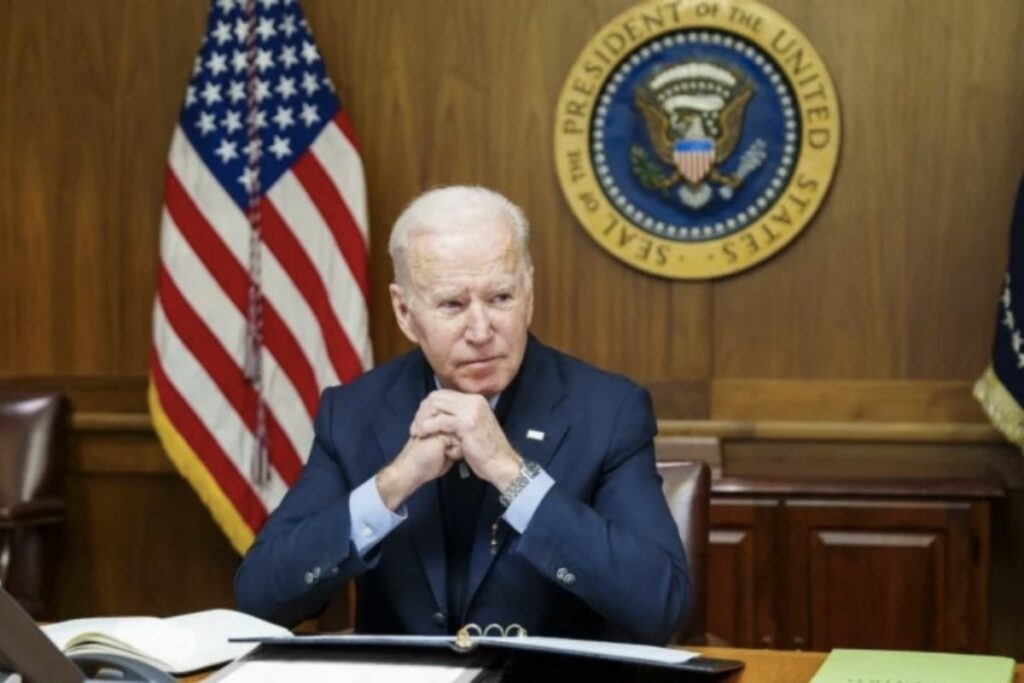Russia’s invasion of Ukraine might deal another blow to the US economy, which is already forecast to weaken after a record-breaking year in 2021, while driving up oil prices and inflation and exacerbating supply chain snarls.
“We’re looking at the tensions via the prism of an economy that’s recovering from COVID, global supply chains are really stressed, and we have a high inflation environment,” says Gregory Daco, chief economist at EY-Parthenon. “The tensions will further fuel inflation and further stress supply chains.”
However, he believes that a conflict would drastically reduce economic productivity by destroying consumer and industry confidence.
Reopening firms, solid job growth, rising salaries, and government stimulus money stimulated robust consumer spending and corporate investment in the United States last year, the strongest pace since 1984. Low-income households, on the other hand, have mostly drained their reserves, and the first rush of spending has essentially passed.
Daco, like many analysts, believes that the economy would expand at a healthy 4% this year, barring any repercussions from the Russia-Ukraine war. Despite the spread of the extremely infectious omicron strain of the coronavirus, businesses added 467,000 jobs in January, and retail sales increased by 3.8 percent. As a result, several analysts have raised their first-quarter GDP projections from below 2% to between 2% and 3%.
The Russian invasion might stifle this year’s advances in the following ways:
According to Kloza, Russia is the world’s second-largest oil producer behind the United States, producing roughly 10 million barrels per day. In reaction to the conflict’s recent intensification, the U.S. benchmark oil price was up about $2, or roughly 2%, to $93 in mid-afternoon trade Tuesday.
According to Kloza, the standoff has raised petroleum prices by $10 to $20 this year due to worries of a rising crisis disrupting supply. Prices have also been driven higher, he claims, by rising global demand and lower output from the United States and Saudi Arabia.
According to Daco and High-Frequency Economics expert Rubeela Farooqi, the battle might impair the Russian oil supply through sanctions imposed by President Joe Biden or Russian response to US penalties. Both scenarios are improbable, according to Kloza, since Russia does not want to lose oil money, and Biden does not want to burden American consumers with rising fuel costs.
In the most likely scenario of ongoing tensions, Kloza predicts that oil will surpass $100 and that the average unleaded gasoline price would jump from $3.53 to just over $4 in the second quarter before falling to around $3.30 in the second half of the year. Higher gas costs cause Americans to cut back on their spending.
A conflict, on the other hand, would exacerbate sanctions and physically hamper the movement of products throughout the area, according to Daco. According to Kloza, this may push oil to $125 to $150 per barrel and typical unleaded gasoline to $4.50 per gallon, further hurting consumers.
According to Daco, the impasse is also driving up prices for other goods shipped from the region, such as wheat and aluminium. A conflict may push up such expenses even more by impeding the transportation of such commodities.
Inflation, which touched a 40-year high of 7.5 percent in January, is anticipated to be stoked by higher oil and commodities costs. According to Daco, the consequences might add up to a percentage point to consumer price hikes.
He believes that this will push the Federal Reserve, which is forecast to raise key interest rates at least three times this year, to raise rates even faster, boosting borrowing costs for consumers and companies.
Higher energy and commodity prices may damage U.S. corporate profitability, as Fed rate hikes pull investor funds away from equities and into bonds. Both are terrible news for markets, with the S&P 500 index down nearly 5.6 percent so far this month amid fears that the crisis would worsen. If conflict breaks out, Goldman Sachs anticipates a further drop of 5% to 6% in the stock market.
Also Check:
- As Omicron Levels Decline, The Us Immunisation Campaign Is Nearing Its Nadir
- Remarkable Performances From Mane And Salah Rescued Liverpool From Defeat
- Athletes’ Village Residents Have Complained About The Loudness From Team Usa Men’s Ice Hockey
Stocks falling and worries of rising costs and interest rates, according to Daco, may quickly reverberate through the economy. Businesses may reduce investment and recruiting, resulting in a slowing of job growth. As a result, consumers may cut back on their spending.
Falling stock prices and other issues may push the Fed to hike rates more gradually, which may be a bright light.
“They don’t want to do anything that would suffocate the recovery,” Farooqi adds.
However, Daco believes that this is less likely in this situation since the crisis might exacerbate inflation, which the Fed is working hard to combat.
Leading economists and market experts continue to believe that conflict is improbable. The impact on markets, inflation, and interest rates should be minimal in this situation. According to Daco, overall economic growth might be cut by two-tenths of a percentage point to 3.8 percent.
“Recent market reactions to the Ukraine crisis have been sharp, but they largely represent fear,” says Brad McMillan, chief investment officer for Commonwealth Financial Network. “Fear over what could happen, not what is happening. Ukraine, while a significant geopolitical event and potentially a human tragedy, will have minimal direct effects on the U.S. economy.”
A war, however, would be another story and could reduce 2022 growth by as much as a percentage point, Daco says.

